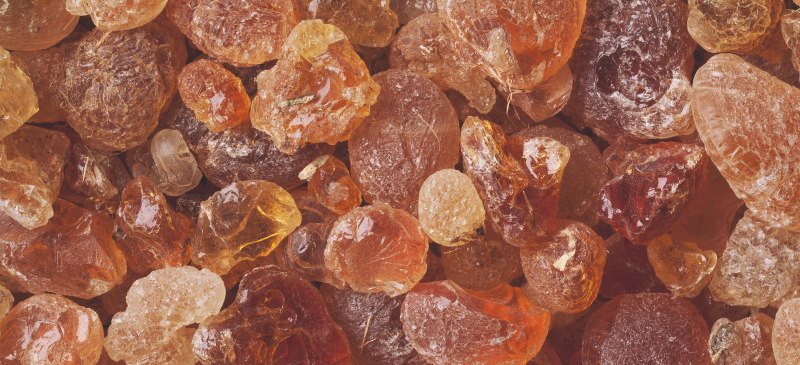GUM ARABIC PROCESSING IN NIGERIA, THE FEASIBILITY REPORT.

Gum Arabic is a leguminous tree species that is well adapted to Sudan and Sahalian agro-ecology of Africa. There are over three hundred (300) species in this family. Notable among them is Acacia Senegal because it produces grade 1 quality gum. Its distribution is localized in Africa.
The gum is obtained as dry exudates from the stem and branches of Acacia Senegal and/or Acacia seyal when the plant is injured.
The majority of Gum Arabic is produced from seventeen (17) African countries (Fourteen (14) of which were members of the NGARA network in 2007) in varying quantity and quality.
These countries include: Sudan, Chad, Nigeria, Cameroon, Niger, Senegal, Mali, Mauritania, Burkina Faso, Kenya, Ethiopia, Tanzania, Eritrea, Somalia, Zimbabwe, Uganda and Ghana.
There are over one thousand, one hundred (1,100) Acacia species worldwide. However Acacia Senegal and Acacia Seyal are the most commercially exploited species.
Nigeria has three grades of Gum Arabic;
Acacia Senegal (grade 1)
Acacia Seyal (Grade 2) and
Combretum (Grade 3).
The major Acacia utilized for commercial Gum Arabic production in Nigeria are Acacia Senegal and Acacia seyal. Nigeria is the second largest producer of the crop in the world after Sudan with average production of twenty thousand (20,000) metric tonnes of all grades of Gum Arabic.
In the year 2004, world production of Gum Arabic was put at seventy thousand (70,000) metric tonnes while Nigeria’s production amounted to eighteen thousand, nine hundred and thirty-five (18,935) metric tonnes with export earnings of US$88.08 million.
Production of Gum Arabic covers fourteen (14) states of the Federation namely Borno, Yobe, Jigawa, Bauchi, Gombe, Taraba, Plateau, Adamawa, Sokoto, Kebbi, Katsina, Zamfara, Nasarawa and Niger with an estimated population of four million (4,000,000) Nigerians engaged in its cultivation and trade.
The gum has a wide range of industrial uses especially, in areas of feed, textiles and pharmaceutical industries.
In food products, it serves as a stabilizer, emulsifier, and binding agent for chewing gums, ice creams and jams. In pharmaceuticals, the gum is a binder in iozenges, tablets, pills, throat pastilles and cough drops. In textile industry it is used for fabric stiffening and as a binder for textile printing gums; it is also used in the plastic industry.
In miscellaneous industries it is used in producing ink, water colours, paints, carbon papers, pottery glaces etc.
However, the main use of gum arabic remains in confectionery, hard gums, soft gum and gum pastilles.
This report seeks to examine the financial viability or otherwise of establishing Gum Arabic processing plant in Nigeria which involves the sourcing of low grade Gum Arabic and processed into spray dried powder food grade gum arabic (purity of 99% and above).
The production capacity of the proposed business is one point two (1.2) tons per day of three (3) shifts of eight (8) hours each working at eighty percent (80%) of the installed capacity producing forty-eight (48) tons of grade 1 (Hashab).
Custom Research Request
Still haven't found what you're looking for?
Speak to our Custom Research Team.
Table of Contents
EXECUTIVE SUMMARY 1.0 Business Overview 1.1 Description of the Business 1.2 Vision and Mission Statement 1.3 Value Proposition 1.4 Critical Success Factor of the Business 1.5 Current Status of Business 1.6 Description of the Business Industry 1.7 Contribution to Local and National Economy 2. Marketing Plan 2.1 Description of product 2.2 Product Packaging and delivery 2.3 The Opportunity 2.4 Pricing Strategy 2.5 Target Market 2.6 Distribution and Delivery Strategy 2.7 Promotional Strategy 2.8 Competition 3. Technical Analysis 3.1 Description of the Location 3.2 Raw Materials 3.3 Production Process and Technology 3.3.1 Pre-Export Documentations in Nigeria 3.3.2 Post-Export Documentations (Exchange Control Documents) 3.4 Production Cost 3.5 Stock Control Process 3.6 Pre-Operating activities and expenses 3.6.1 Operating activities and expenses 3.7 Project Implementation Schedule 4.0 Organizational and Management Plan 4.1 Ownership of the business 4.2 Profile of the promoters 4.3 Key Management Staff 4.3.2 Management Support Units 4.4 Details of salary schedule 5. Financial Plan 5.1 Financial Assumption 5.2 Start - Up Capital Estimation 5.3 Source of Capital 5.4 Security of Loan 5.5 Loan Repayment Plan 5.6 Profit and Loss Analysis 5.7 Cashflow Analysis 5.8 Viability Analysis 6.0 Business Risk and mitigation factor 6.1 Business Risks 6.2 SWOT Analysis
Project Specification:
Additional Info
Get this Report
Direct bank transfer
To order the report, Please do pay the sum of ₦200,000 into
Account Name : Foraminifera Market Research Ltd
Account Number : 274 20 569 37
Account Name : Foraminifera Market Research Ltd
Account Number : 101 76 603 95
Account Name : Foraminifera Ventures
Account Number : 011 66 066 32
Make your payment directly into our bank account. Please use your Order ID as the payment reference. Your order will not be shipped until the funds have cleared in our account.
Instructions
After payment call us on 01 -29 52 413 / 08033782777 or email us at foraminiferamarketresearch@yahoo.com with the payment details. After payment confirmation, the soft copy of the report would be sent to you within 24 hours.
